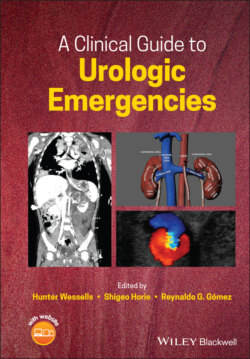Читать книгу A Clinical Guide to Urologic Emergencies - Группа авторов - Страница 37
Civilian Versus Military Trauma
ОглавлениеIn civilian trauma, the kidneys are the most commonly injured genitourinary (GU) organ. The kidneys are injured in 1–5% of trauma patients and comprise up to 24% of traumatic solid abdominal organ injuries [4–6]. Stratifying by mechanism, there is wide geographical variation for penetrating renal injury (PRI) versus blunt renal injury (BRI) and the reported range for PRI is between 10.9 and 43.9% of all renal injuries [7–9].
Historically, in wartime trauma, the kidneys were the predominant GU organ injured during conflicts in the early and mid‐twentieth century. Hugh Hampton Young described the GU injury patterns for Allied Forces in World War I and noted a 7.3% incidence of renal trauma at time of laparotomy with a 50% mortality rate [10]. These were almost all penetrating injuries, with 93.9% of soldiers having a concomitant hollow viscous injury. Surprisingly, the nephrectomy rate was only 18.1% [10]. There has been a paradigm shift in GU injuries due to advancements in technology – specifically the use of Kevlar body armor – resulting in a significant decline of PRIs and an increase in complex lower tract blast injuries, the signature GU injury of the recent conflicts in the Middle East [11–14].
Although penetrating trauma is seen in both civilian and military trauma, mechanistically they vastly differ. Civilian penetrating trauma has an equal distribution between stab and gunshot wounds (GSW) and the majority of GSW are low‐velocity handguns [15]. Military penetrating trauma is usually due to high kinetic weapons such as rifles or due to blast injury (BI). However, due to the global increase of terror attacks and mass shootings, managing patients with injuries from these high kinetic weapons among civilian surgeons is increasing, so understanding how to manage these injuries is paramount.
